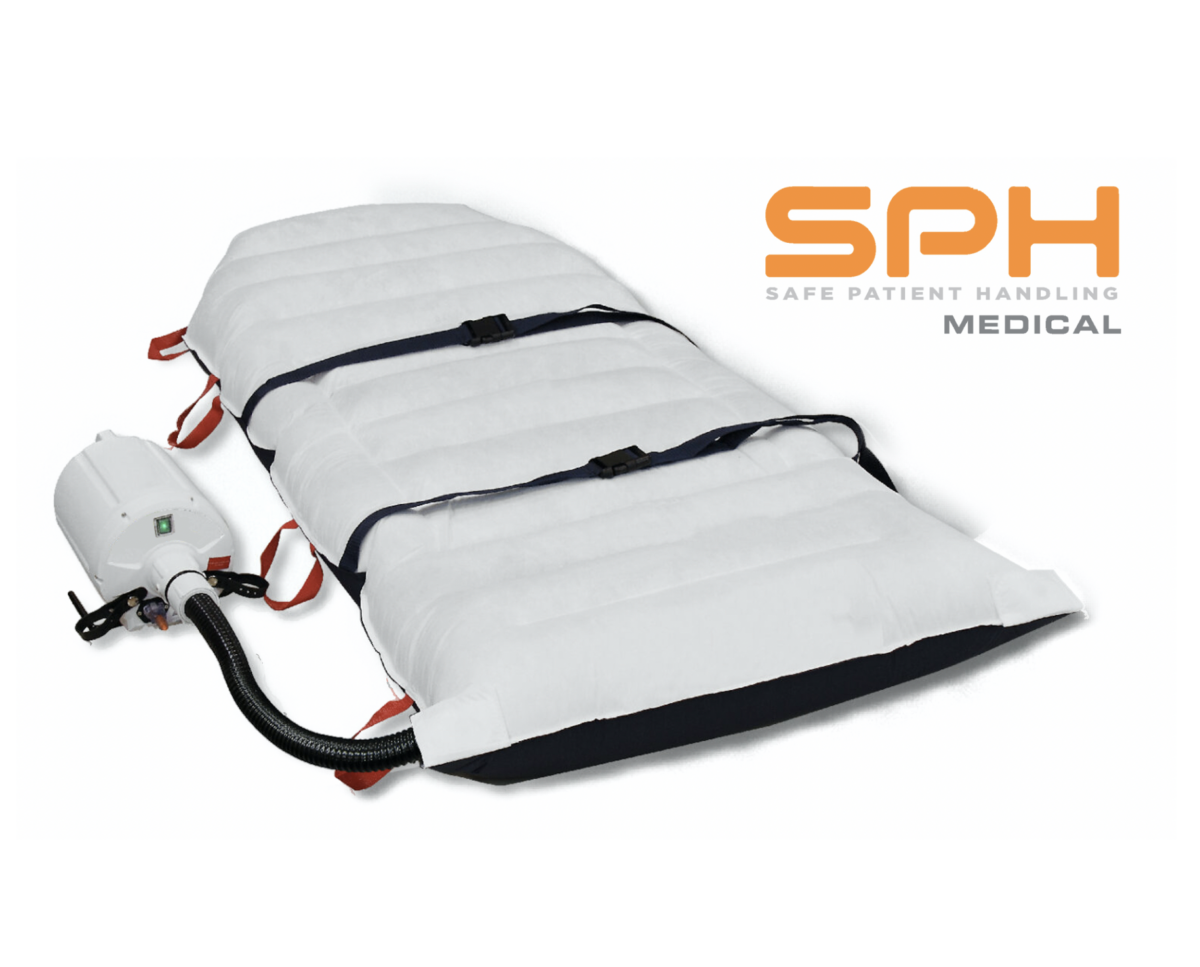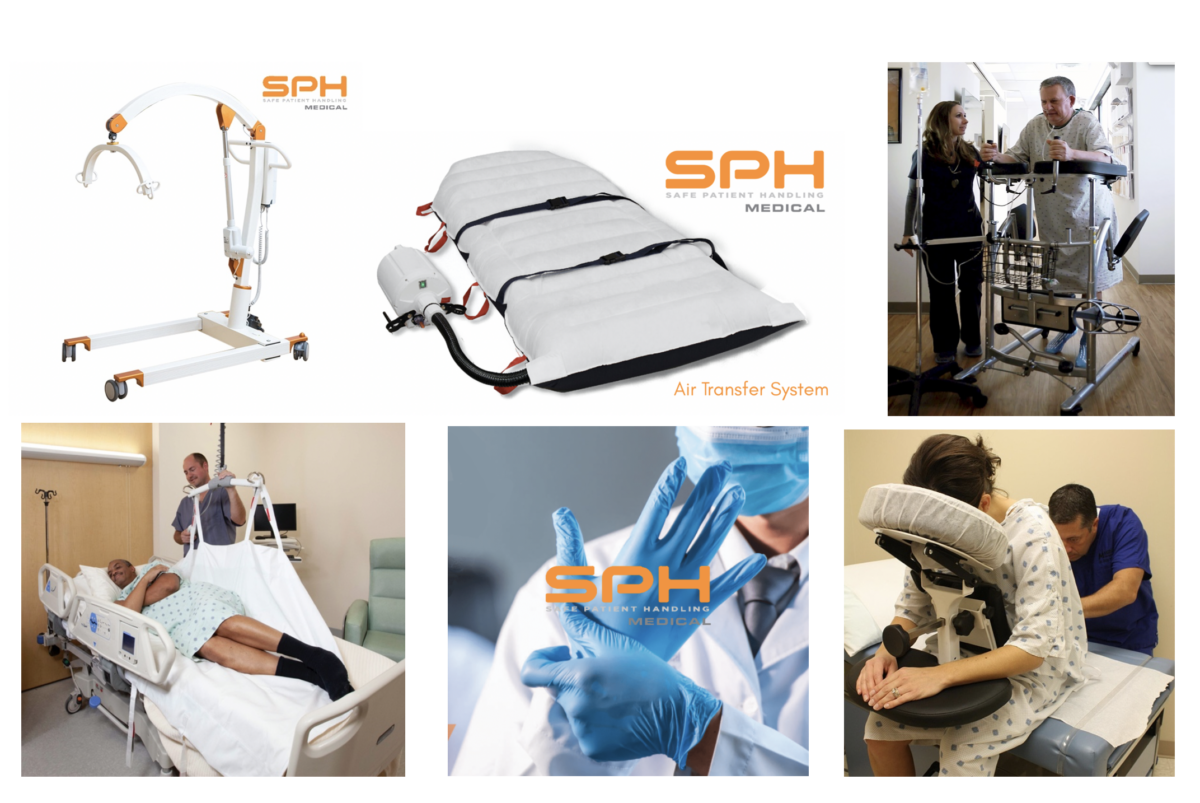There is an injury crisis going on in the healthcare industry. Nurses are suffering injuries at an alarming rate while performing lateral transfer, repositioning patients in their beds, and other common tasks. Many of the approximately 3 million Registered Nurses working in the US face daily hazards that put them at risk. A Veterans Health Administration study in 2000 revealed nurses were injured on average six times more often than workers in any other occupational group. And in 19.1% of the cases, they suffered back injuries and another 25.5% of them suffered upper extremity injuries caused by doing lateral transfers, lifting, repositioning, static holds, and moving patients. Back injury prevention for Nurses is highly over looked and can be implemented easily.
A High-Risk Occupation
Nursing is among the highest risk occupations when it comes to being injured because of lifting and moving and the repetitive tasks they perform on a daily basis. Combine their normal patient care duties with the fact that patients are getting heavier. Injury data shows no profession is more plagued by work-related back injuries and musculoskeletal disorders than nursing. Nurses suffer injuries at a rate that is double that of many other industries. Injury data shows 12% of nurses who work in hospitals and 17.3% who work in nursing homes suffer back and musculoskeletal work-related injuries each year. In many instances, it results in lost workdays and also forces many nurses to retire early or simply to leave the profession.
Two Simple Solutions
Two simple solutions that can help reduce the work-related injuries that nurses suffer include training programs that are focused on evidence based best practices for Safe Patient Handling that include the proper assessment of patients, lifting, repositioning, transferring, ambulating and moving patients safely with the appropriate specialized equipment. There are many good training programs that can teach nurses safe and effective ways to move even the heaviest patient and minimize if not eliminate the risk of injury to the nurse or the patient. Plus, there are also several new, easy-to-use pieces of equipment nurses can use to lift, move, transfer, hold a limb, reposition, and mobilize their patients quickly, safely, and efficiently without the risk of getting an injury.
Training Programs Help
Traditionally, nursing education has emphasized patient safety and not self-protection for nurses when doing the patient lifting, handling, and movement tasks. Few nurses were taught the NIOSH guidelines for use by workers who routinely lift loads weighing 51 pounds or more. Most programs in the past focused on the use of proper body mechanics. We now know that the use proper body mechanics is still important but cannot alone adequately reduce the risk of injury to nurses. Research shows that in healthcare facilities where nurses implemented an evidence based Safe Patient Handling program with the proper assistive solutions, musculoskeletal and back injuries to nurses fell by 70%, productivity increased, patients said they felt safer and there was higher nurse-patient satisfaction according to testimonials from families, patients, and nurses.
Patient Handling Equipment Makes A Dramatic Difference
According to OSHA, patient lifting equipment can reduce the injury risk for both nurses and patients by 95% while also improving the quality of care patients receive. Using patient lifting equipment is essential for safe patient handling and to prevent injuries from the two most injury causing tasks, a lateral transfer and repositioning (includes turning and boosting) a patient in bed. Assistive devices ensure patients can be safely repositioned, transferred from one surface to another, and moved while reducing the risk of injury to nurses by avoiding high-risk manual patient handling activities. Safe patient handling and mobility technology can preserve nurses’ independence and safety and improve patients’ healthcare experience.
Patient Transfer Devices
Repositioning patients in their beds or moving them between their bed and a stretcher, chair or wheelchair doesn’t have to be physically taxing or put nurses at risk of injury when lifting and transfer devices are used. There are air powered lateral transfer systems nurses can use to easily transfer patients from beds to stretchers on a cushion of air that’s underneath an inflated mattress. It reduces friction, letting patients float from one surface to another. Some of the top brands like SPH Medical, AirPal, and Hovermatt can help to make it a breeze for nurses to safely transfer, reposition and move patients from surface to surface. Departments like Labor and Delivery use the Air Transfer Mat by SPH Medical for patients getting a Cesarian Section (C-Section). The Air Transfer System makes it safe and comfortable to transfer the mom on and off the OB OR table. The surgery department uses the single patient use version of the SPH Medical Air Powered Transfer Mat for virtually all patients. Organizations like the Association of PeriOperative Registered Nurses, AORN, have included the recommendation to use Safe Patient Handling assistive solutions like the Air Transfer Mattress for all patients over 157 lbs when transferring patient to or from the OR table.
breeze for nurses to safely transfer, reposition and move patients from surface to surface. Departments like Labor and Delivery use the Air Transfer Mat by SPH Medical for patients getting a Cesarian Section (C-Section). The Air Transfer System makes it safe and comfortable to transfer the mom on and off the OB OR table. The surgery department uses the single patient use version of the SPH Medical Air Powered Transfer Mat for virtually all patients. Organizations like the Association of PeriOperative Registered Nurses, AORN, have included the recommendation to use Safe Patient Handling assistive solutions like the Air Transfer Mattress for all patients over 157 lbs when transferring patient to or from the OR table.
Thousands Of Preventable Injuries

Assistive patient transfer devices can help protect nurses nationwide from suffering an endless array of preventable back and musculoskeletal injuries that are caused by overexertion, repetitive patient handling tasks, or lifting patients improperly without the appropriate assistive solution while delivering patient care. One particularly dangerous high-risk task with which patient lifting and transport devices can help is ‘in-bed repositioning’. This is a common task nurses perform where they boost a patient up in bed and then turn them, some weighing 300 pounds or more, to put them in a better position in their beds and to offload pressure on bony prominences. Performing this task and manually transferring patients from their beds to other surfaces are common reasons nurses suffer approximately 40,000 back and countless musculoskeletal injuries each year.
A Very High Cost
Treating work-related injuries costs in excess of $29 million a year in direct costs. And there are many indirect, less visible costs that are difficult to measure, yet have a very significant impact on the finances and resources of the nurses and facilities in which they work. Some of these indirect costs include training new employees, on-boarding and overtime, that impact the healthcare facility’s finances and resources. Others include employee turnover, loss of morale, productivity, incident investigation time and patient safety. Plus, the cost to replace a nurse can range anywhere between $27,000 to $103,000 each. This means it is much more cost-effective to invest in Safe Patient Handling education with the appropriate patient transferring, lifting and mobility devices to prevent nursing injuries from predictable high risk and high frequency tasks like lateral transfers and repositioning.
Contact SPH Medical to discuss your Safe Patient Handling program and take steps to reduce the risk of injury to your nursing staff by implementing evidence based solutions that staff will enjoy using.



